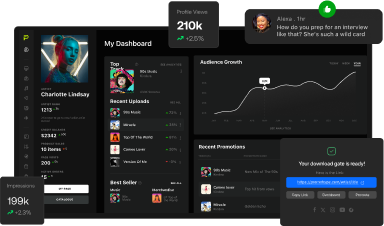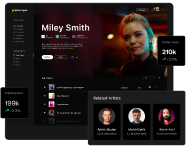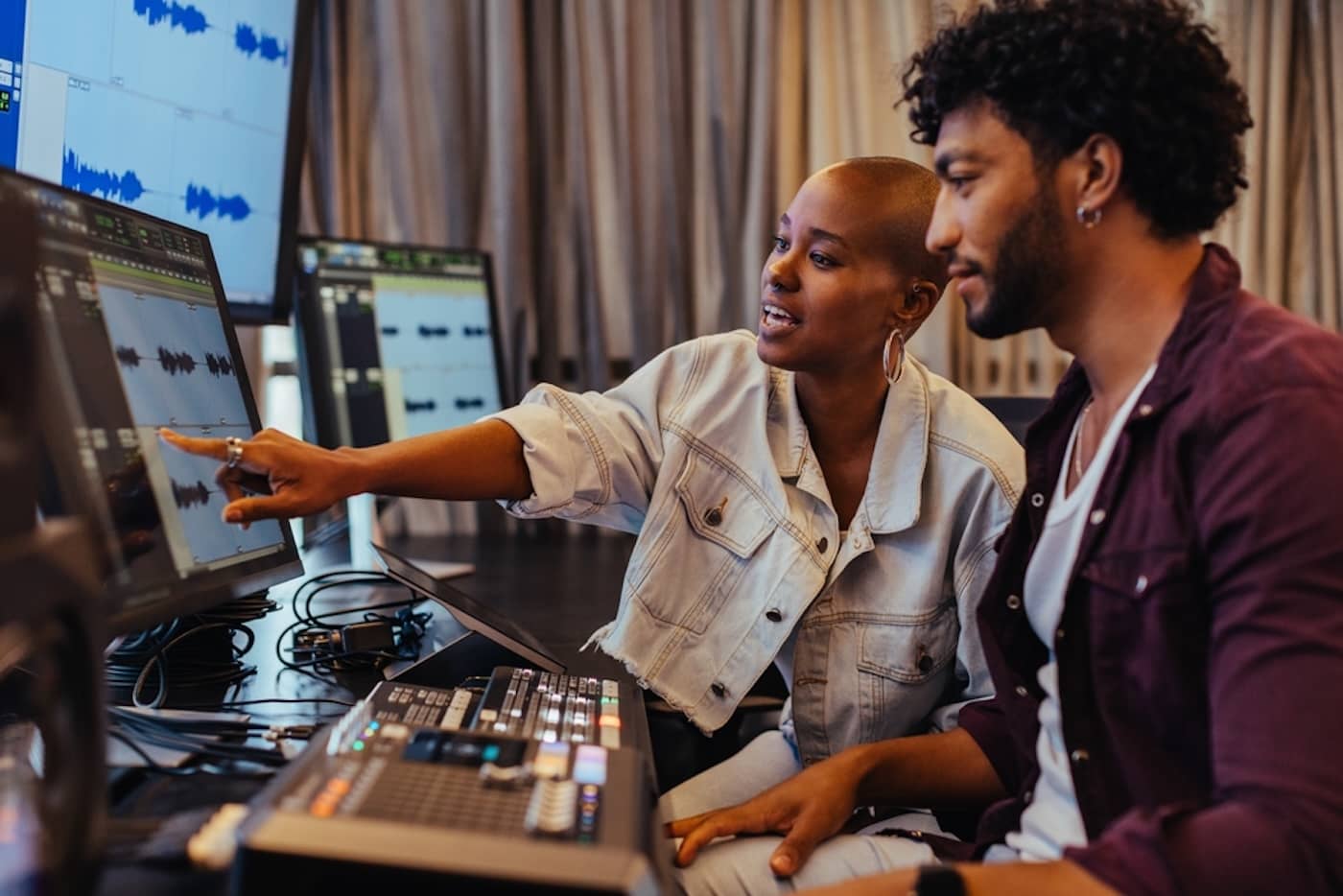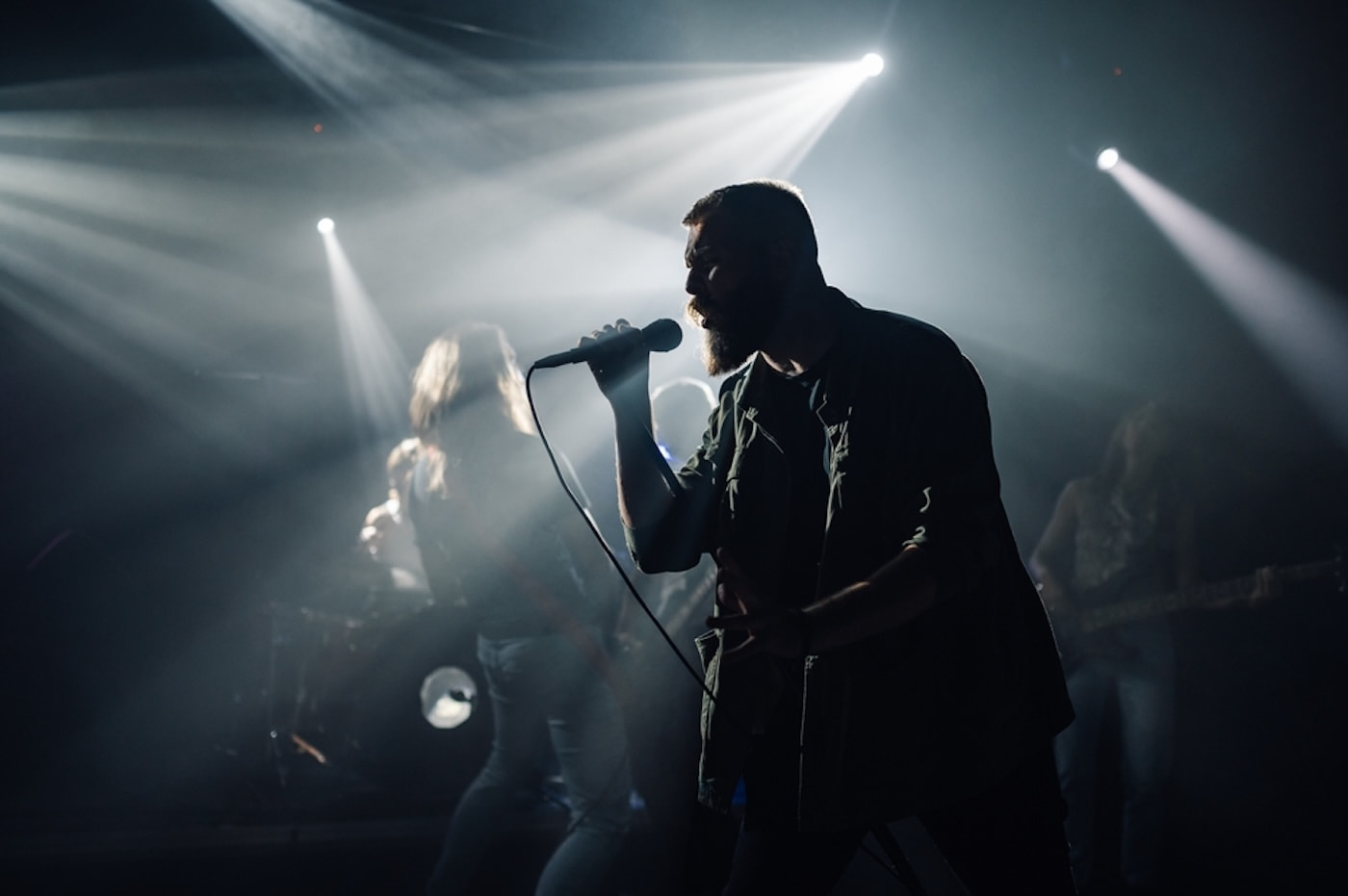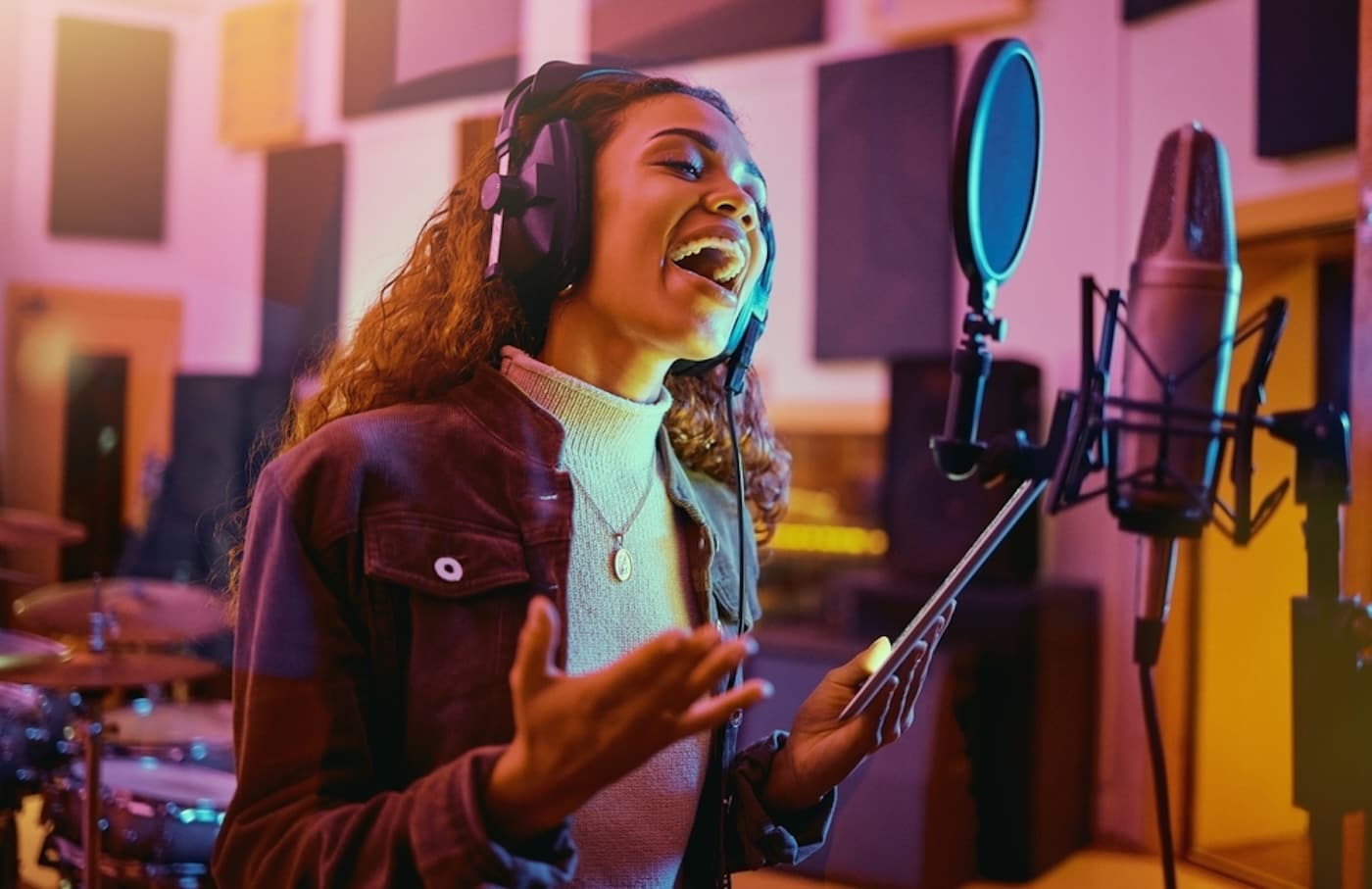
In today’s music industry, becoming a successful independent artist demands more than raw talent; it requires consistent effort and a well-crafted marketing and promotional strategy.
Fortunately, today’s digital landscape offers a range of powerful tools designed to help musicians plan, manage, and optimize their marketing campaigns with ease.
In this guide, we’ll explore the best music marketing tools available to independent artists that can help you grow your audience, reach new fans, and build a sustainable, long-term music career.
Get Early Access
To Promo Hype
The 10 Best Music Marketing Tools For Independent Artists In 2025
Writing and producing great music requires a range of music marketing tools to reach the audience it deserves.
These are the top 10 music marketing tools for independent artists, from audience analytics to design and editing programs.
10. Data Analytics & Optimization Tools
Before you can begin running marketing campaigns, you’ll need to implement tools for tracking data and optimizing your content..
Whether you’re a music producer or singer-songwriter, these tools are essential for tracking campaign performance and music discovery.
Professionals widely use the Chartmetric website for tracking data across various streaming platforms, including Amazon Music and Spotify.
Another commonly used platform is Soundcharts, which delivers real-time music marketing intelligence tools for radio airplay and charts.
These tools can be complemented with analytics features available through Apple Music and Spotify for Artists.
For more general data analytics, Google Analytics and other keyword research tools are vital for refining your written content.
By bringing these tools together, you can acquire a comprehensive range of data to help you thrive in a digital music landscape.
Recommended read: How to trademark a band name.
9. Design & Content Creation Tools
Fleshing out a comprehensive music marketing schedule involves compiling a collection of branded assets to use in campaigns.
This can range from album artwork and tour posters to music videos and behind-the-scenes footage for YouTube videos.
To create these assets, dedicated content creation tools are necessary, with free and paid options for graphic design, illustration, and video editing.
You can use free design tools like Canva and GIMP to create logos and poster designs, which can be applied to brand merchandise ideas.
For casual video editing apps, free platforms like CapCut and iMovie are easy to use and include basic tools suitable for beginners.
If you need advanced features, DaVinci Resolve is widely used by professionals, with a feature-rich free version also available.
Numerous tutorials are available on platforms like YouTube that you can refer to when creating and editing your own promotional content.
By exploring the features available, you can design high-quality marketing materials with relatively little prior experience.
8. Electronic Press Kits (EPKs)
Electronic press kits (EPKs) are essential marketing tools that can serve a range of promotional purposes.
They can be used to announce new releases and upcoming tours, providing clarity for music journalists and bloggers.
While the purpose can vary, the assets included in an EPK are consistent, allowing artists to create a template ready to edit.
Here’s an overview of the key features to include when creating an electronic press kit template:
- Short bio: All EPKs should include a concise biography that introduces your act, explains your background, and outlines your influences.
- High-quality press photos: Eye-catching photos of your performances or professional headshots are also essential components of EPKs.
- Examples of your music: Whether you’re promoting a new release or not, including examples of your music will enhance the value and utility of your EPK.
- Live performances and music videos: You can further enhance an EPK by adding videos that showcase your live performances or including visually striking videos for upcoming releases.
- Press coverage: If you’ve previously been covered positively in the media, adding links to these articles can strengthen your social proof.
- Contact information: An EPK is designed to initiate conversations, so ensure the recipient has up-to-date contact information to facilitate communication.
You can then add relevant sections and information based on the EPK’s purpose when promoting to industry professionals.
Discover more: Music production 101.
7. Fan Base Support Platforms
There are numerous powerful fan base donation platforms that independent artists can utilize to generate revenue and promote their work.
Each of these platforms offers a comprehensive suite of tools that artists can utilize to achieve various monetization objectives.
Platforms like Patreon, Bandcamp, and FanCircles allow fans to support your work through monthly subscriptions and one-time donations.
Patreon in particular has a strong reputation among independent musicians, with many artists already signed up to the platform.
Its robust features, such as the Superfan tool, have even influenced how the music industry approaches content creation.
They’re also ideal for monetizing unreleased music and sharing exclusive content for dedicated paying followers.
This exclusive content can include everything from guided tours of your home recording studio to exclusive interviews.
Some artists also offer one-to-one chats with fans, with Discord being another excellent option for engaging with your audience.
Each of these fan support platforms allows for customized profiles that can include your artist’s branding and logos on all content.
With options for hosting live events and listening parties, they’re highly flexible tools for promotion and revenue generation.
6. Discovery & Promotion Tools
Standing out from the other artists in your release schedule means combining the best discovery and promotion tools available.
Like excellent AI music production tools, these apps utilize machine learning processes to deliver optimal results for users.
We’ve touched on Spotify for Artists and Bandcamp, and these platforms are well-suited for direct sales and outreach.
These tools can be augmented with additional third-party discovery and promotion tools, such as Musixmatch and SubmitHub.
Harnessing the potential of these tools is crucial for discovering new listeners and securing a spot on emerging editorial playlists.
They enable you to promote your music directly to bloggers and journalists by submitting applications for premium placements.
As your experience with each of these tools develops, you can refine which ones you use and how they apply to specific campaigns.
Get Early Access
To Promo Hype
5. Smart Links
A relatively new music marketing tool that can deliver impressive results for independent musicians in smart links.
These tools can be used to create a single shareable URL for promotion campaigns, which links to a customizable landing page.
There are many different ways to utilize smart links for musicians, such as generating pre-saves for early access to new music.
You can also use smart links to drive traffic to your own content on streaming platforms, thereby boosting your royalty streams.
Additional ideas for smart links include maximizing your social media bios, building email lists, and gathering fan data to track.
They can also be used when creating a custom microsite for branding, as well as boosting merchandise and ticket sales.
Once you’ve created a smart link, consider integrating it into your EPK to make it easier for recipients to access your tracks.
If you’re handing out flyers in person, they can also include QR codes to help integrate your digital and in-person marketing strategies.
4. Artist Websites
Setting up an artist website provides a central hub through which multiple marketing campaigns can be directed.
The best band websites demonstrate just how important it is to have your own website for building anticipation for releases and tours.
You can build a band website on a limited budget by utilizing website builders that offer intuitive drag-and-drop interfaces for all pages.
A website can provide a comprehensive overview of your music career, with videos, photos, and archives of your tracks.
You can also include links to streaming platforms and social media to explore new opportunities for engagement with listeners.
Additional content used on sites for the best music producers can include sample libraries, tutorials, and other resources.
If you lack design skills, you can utilize the tools outlined above to create a website’s visual style and brand elements.
3. Social Media Platforms
The role of social media in the music industry is deeply rooted, from generating buzz about new releases to fostering communities.
Platforms like Facebook, X, Instagram, and TikTok all have enormous user bases that can be leveraged for promotional purposes.
If you’re promoting an upcoming event, Facebook’s event-based pages are ideal for building interest in your local area.
On the other hand, Instagram Stories are ideal for showcasing your music production skills, as well as the equipment and software used.
Managing multiple social media pages can, however, be challenging, but there are several tools you can use to streamline processes.
For planning and scheduling upcoming posts on multiple accounts, Hootsuite’s range of tools offers robust solutions.
It also includes in-depth analytics that can be used to refine future campaigns and use assets that capture the reader’s attention.
Alternatives like SocialPilot and Buffer offer similar tools, with clean user interfaces and in-depth analytics reporting.
If you’re using a YouTube channel as part of your marketing efforts, Social Blade is a powerful resource for tracking data.
It can also be used to track competitors and analyze channel performance from singers and bands working in your genre.
Learn more: How to start a record label.
2. Mailing Lists
Traditional mailing lists might seem archaic in today’s AI-driven economy, but they remain pivotal to successful music marketing.
They can be used to drive awareness of new releases, upcoming tours, and updated selections of band and artist merchandise.
General-purpose email marketing platforms like Mailchimp and Flodesk are adept for music-specific marketing initiatives.
Mailchimp offers a free, beginner-friendly plan suitable for new artists, with the option to upgrade for more email addresses over time.
You can also consider ActiveCampaign, which offers more advanced tools and deeper segmentation based on your fans’ behavior.
With your tools in place, you can create opt-in incentives for access to unreleased music and grow your social media followers.
Whether you use mailing lists to get gigs as a musician or for general promotion, these tools will enhance your processes.
1. Digital Music Distribution Services
While physical media sales are still viable for musicians, most artists focus their efforts on the major streaming platforms.
Spotify, Apple Music, and other platforms are all essential for making it easier for new fans to discover music.
Whether you’re sharing an extensive back catalog or an EP and album, managing these streaming services can be a time-consuming task.
Fortunately, there are digital music distribution services that can streamline these processes and save valuable time.
With automation, scheduling tools, and analytics to drive traffic to where your streams are heard, they’re affordable and easy to use.
Most digital music distribution services work on a monthly subscription fee, allowing artists to retain 100% of their music royalties.
Read this next: A guide to artist management.
Music Marketing Tips
Managing multiple music marketing campaigns can be a challenge, even when using a range of marketing tools.
If you’re struggling to get your music marketing campaigns off the ground, here are some tips to help:
- Create a content release strategy: Managing multiple marketing campaigns can quickly become overwhelming if you haven’t planned everything out. A content release strategy will deliver a clear view of what needs to be done and when.
- Proactively pitch to the media: Building a beautiful band website is of little value if no one sees it, but a proactive approach will generate more interest. Don’t be afraid to reach out to journalists directly and request interviews and coverage.
- Use A/B content testing: Most professional content marketers are familiar with A/B testing to refine their selected assets. You can use this process to see which logos work best, updating and using assets accordingly.
- Incorporate traditional marketing methods: Handing out flyers can be as effective as digital ads and social media posts when promoting upcoming events. Don’t be afraid to incorporate conventional print media into a broader music marketing strategy.
By focusing your efforts where they count and automating processes, you can spend more time making music your fans love.
Summary
Music marketing is about more than just promotion; it’s about building genuine connections with listeners through creative, visually engaging content.
By leveraging the tools featured in this guide, you can expand your reach, attract new fans, and boost both album and ticket sales.
When used together, these tools streamline your workflow, helping you save time so you can focus on creating great music.
Get Early Access
To Promo Hype
Join Promo Hype
